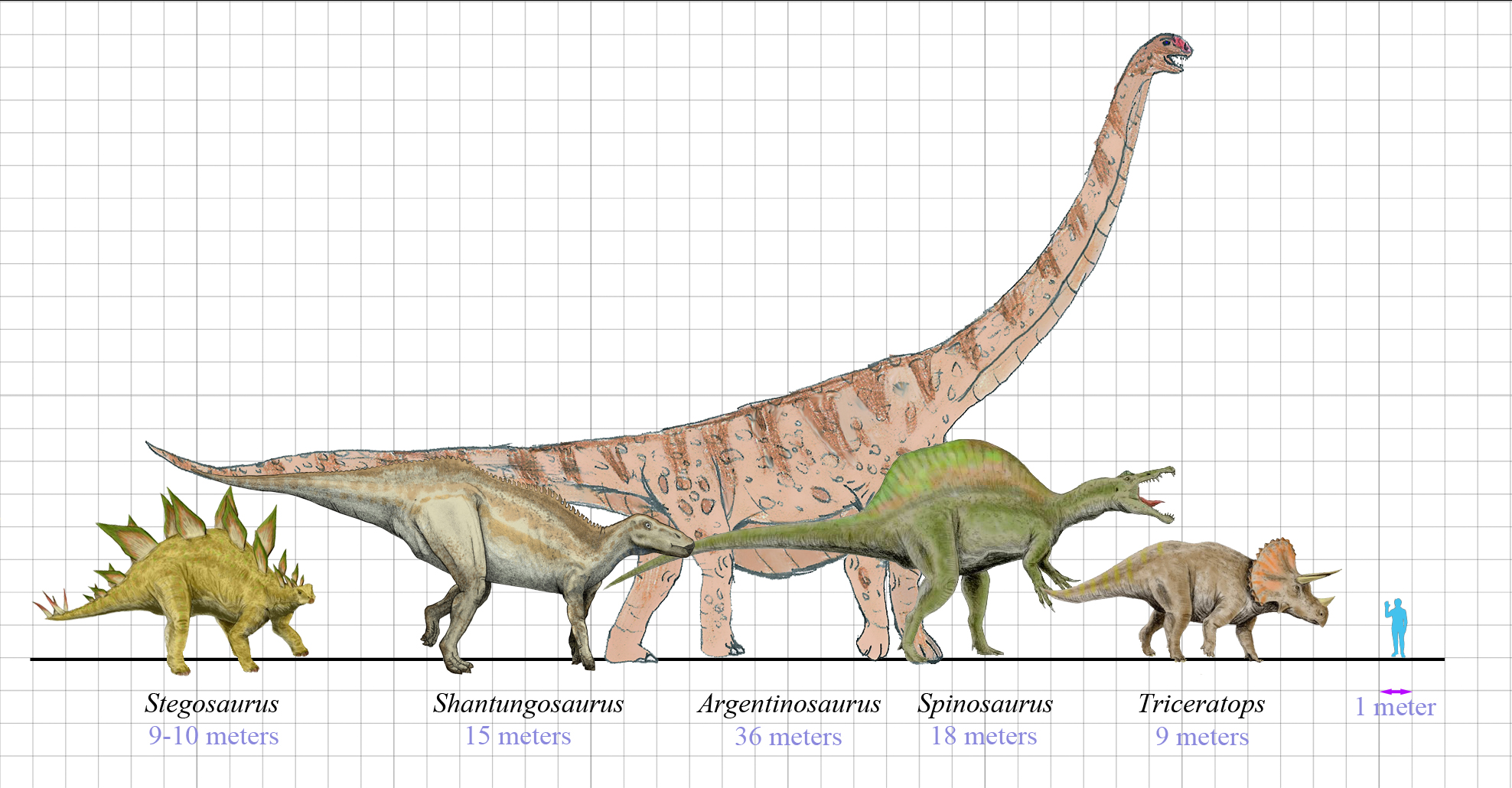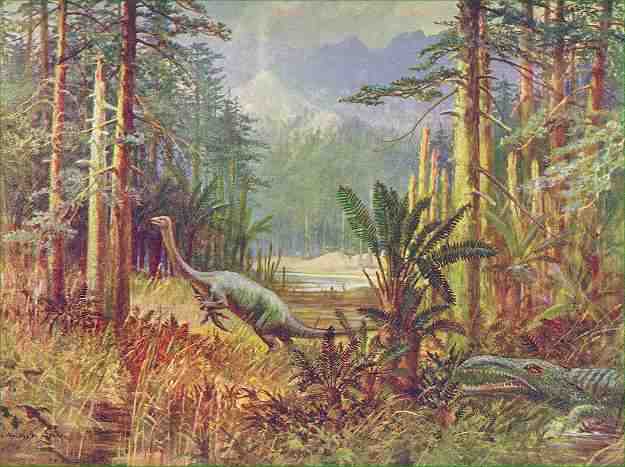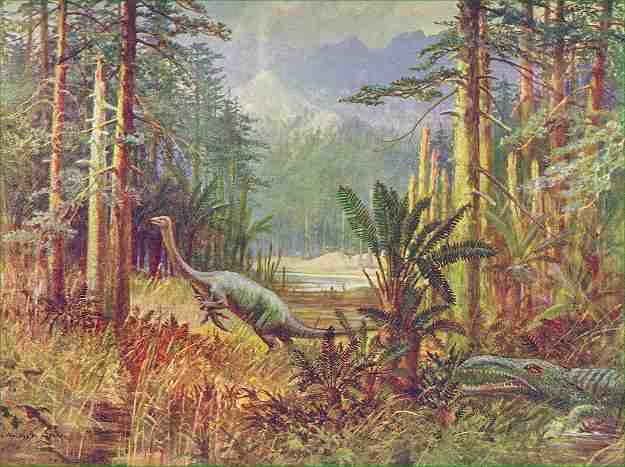Picture this: a massive T. rex stalking through a prehistoric forest, its bone-crushing jaws capable of delivering a bite force of 12,800 pounds per square inch. Now imagine rewinding the clock 100 million years earlier, when dinosaurs were just beginning their evolutionary journey. The hunting strategies of these early predators were as different from T. rex as a house cat is from a lion. While most people think all dinosaurs were similar apex predators, the reality is far more fascinating and complex.
The Dawn of Dinosaur Predation
When dinosaurs first appeared during the Late Triassic period, around 230 million years ago, they weren’t the dominant predators we imagine today. These early hunters were actually quite small, typically measuring only 3 to 6 feet in length. Unlike the massive T. rex that would thunder across landscapes millions of years later, early dinosaurs like Eoraptor and Staurikosaurus were nimble, opportunistic hunters.
Their hunting style relied heavily on speed and agility rather than brute force. These primitive predators had to compete with other dominant reptiles of their time, including large archosaurs and early crocodilians. Think of them as the scrappy underdogs of the prehistoric world, using their wits and quick reflexes to survive in a landscape filled with much larger, more established predators.
Size Matters: The Great Divide
The size difference between early dinosaurs and T. rex represents one of the most dramatic evolutionary leaps in Earth’s history. While T. rex could reach lengths of 40 feet and weigh up to 9 tons, early dinosaurs like Herrerasaurus maxed out at about 20 feet and weighed roughly 770 pounds. This isn’t just a numbers game – it fundamentally changed how these animals approached hunting.
Early dinosaurs couldn’t rely on their size to intimidate prey or deliver crushing blows. Instead, they developed lightning-fast reflexes and razor-sharp claws that could slice through flesh with surgical precision. Imagine the difference between a heavyweight boxer and a skilled fencer – both are deadly, but they use completely different approaches to achieve their goals.
Speed vs. Power: Different Evolutionary Paths

Early dinosaurs were built for speed, with long, slender legs designed for quick bursts of acceleration. Their bodies were lightweight and streamlined, allowing them to chase down small prey like early mammals, lizards, and fish. In contrast, T. rex evolved into a living battering ram, sacrificing speed for devastating power.
The skeletal structure tells the whole story: early dinosaurs had hollow bones that reduced weight while maintaining strength, similar to modern birds. T. rex, on the other hand, had massive, dense bones that could withstand the tremendous forces generated by its powerful muscles. It’s like comparing a race car to a tank – both are effective, but for entirely different purposes.
Jaw Power: From Precision to Devastation
The jaw evolution from early dinosaurs to T. rex is nothing short of remarkable. Early predators like Coelophysis had relatively small jaws filled with sharp, serrated teeth designed for slicing rather than crushing. These teeth were perfect for their hunting style, which involved quick, precise bites that could disable smaller prey.
T. rex took a completely different approach with jaws that could literally crush a car. Its teeth were thick, conical weapons designed to pulverize bone and tear through the toughest hide. While early dinosaurs needed multiple bites to take down prey, T. rex could often kill with a single, devastating chomp. The difference is like comparing a surgeon’s scalpel to a sledgehammer – both are tools, but they serve vastly different purposes.
Pack Hunting vs. Solo Supremacy
Many early dinosaurs, particularly species like Coelophysis, hunted in packs to bring down larger prey. Fossil evidence suggests these coordinated group attacks were essential for survival in their competitive environment. Pack hunting allowed smaller dinosaurs to tackle prey much larger than themselves, using teamwork to overcome size disadvantages.
T. rex, by contrast, was likely a solitary hunter that didn’t need backup. Its sheer size and power meant it could take on almost any prey single-handedly. This represents a fundamental shift in predatory strategy – from collaborative hunting to individual dominance. It’s the difference between a wolf pack working together and a grizzly bear that can handle any challenge alone.
Prey Selection: Opportunists vs. Specialists
Early dinosaurs were generalist hunters, taking whatever prey was available and manageable. Their diet included small reptiles, early mammals, fish, and even insects. This flexibility was crucial for survival during the uncertain early days of dinosaur evolution. They couldn’t afford to be picky eaters when competition was fierce.
T. rex, however, was a specialist that focused primarily on large herbivorous dinosaurs like Triceratops and Edmontosaurus. Its entire body was designed for hunting these massive creatures, from its powerful legs for pursuit to its crushing jaws for the kill. This specialization made T. rex incredibly effective at what it did, but also more vulnerable to environmental changes that might affect its preferred prey.
Hunting Environments: Adapting to Different Worlds
The environments where early dinosaurs hunted were vastly different from the world T. rex knew. Early dinosaurs lived in a world with dense forests, river systems, and smaller clearings where stealth and agility were paramount. They had to navigate through thick vegetation and around obstacles, making their lightweight, agile bodies perfect for these conditions.
By T. rex’s time, the landscape had opened up considerably, with vast plains and more open woodlands. This environment favored larger predators who could cover great distances and didn’t need to worry about maneuvering through tight spaces. The hunting grounds themselves shaped the evolution of these different predatory strategies.
Vision and Senses: Evolution of Detection
Early dinosaurs had good vision and hearing, but their sensory capabilities were relatively basic compared to later species. They relied primarily on their eyesight to spot prey and their hearing to detect movement. Their sense of smell was decent but not exceptional, requiring them to get relatively close to their targets.
T. rex, on the other hand, had some of the most advanced sensory equipment in the prehistoric world. Its sense of smell was incredibly acute, possibly even better than modern bloodhounds. Its vision was binocular and excellent for judging distances, while its hearing could detect low-frequency sounds from great distances. These enhanced senses made T. rex a far more effective hunter than its early ancestors.
Bone-Crushing vs. Flesh-Slicing Techniques
The actual killing techniques used by early dinosaurs versus T. rex were fundamentally different. Early predators used a “death by a thousand cuts” approach, using their sharp claws and teeth to inflict multiple wounds that would eventually weaken their prey. They were surgical in their approach, targeting vital areas like the neck and belly.
T. rex employed what scientists call the “bite and crush” method, using its massive jaws to grab prey and then applying tremendous pressure to break bones and cause massive internal damage. A single bite could be fatal, making T. rex’s hunting method far more efficient but also requiring much more energy. It’s the difference between a skilled assassin and a medieval executioner.
Energy Efficiency: Smart Hunting vs. Brute Force
Early dinosaurs had to be incredibly energy-efficient in their hunting because they couldn’t afford to waste calories on failed attempts. Their lightweight bodies required less food to maintain, but they also had smaller energy reserves. This led to hunting strategies that emphasized stealth, precision, and minimal energy expenditure.
T. rex, with its massive body, needed enormous amounts of food to survive – possibly up to 500 pounds of meat per day. However, its hunting method, while energy-intensive, was also highly effective. The trade-off was worth it because T. rex could bring down prey that would feed it for days, unlike early dinosaurs that needed to hunt frequently for smaller meals.
Evolutionary Arms Race: Predator and Prey Development
The evolution of hunting strategies was driven by an ongoing arms race between predators and prey. Early dinosaurs evolved alongside relatively small, agile prey animals that could escape through speed and stealth. This led to the development of quick reflexes, sharp senses, and efficient hunting techniques in early predators.
By T. rex’s time, herbivorous dinosaurs had evolved massive size, thick armor, and powerful defensive weapons. Triceratops had its famous horns and bony frill, while Ankylosaurus was essentially a living tank. T. rex’s massive size and bone-crushing bite were evolutionary responses to these heavily defended prey animals. The hunters and the hunted were locked in an evolutionary dance that shaped both predator and prey.
Social Behavior: Cooperation vs. Competition

Early dinosaurs often displayed more complex social behaviors, including cooperative hunting and shared feeding areas. Fossil evidence suggests that some species like Coelophysis lived in groups and may have cared for their young communally. This social structure supported their pack hunting strategies and helped ensure species survival.
T. rex appears to have been more solitary, though recent research suggests they may have had some social interactions. However, their hunting was primarily individual, and they likely competed with other T. rex for territory and resources. This shift from cooperative to competitive behavior reflects the change from survival-focused early dinosaurs to the apex predator dominance of later species.
Speed and Agility: The Lost Art of Dinosaur Hunting

Perhaps the most striking difference between early dinosaurs and T. rex was their approach to speed and agility. Early predators like Compsognathus could reach speeds of up to 40 miles per hour, using their long legs and lightweight frames to outrun both prey and competitors. Their hunting style was all about quick strikes and even quicker escapes.
T. rex, despite its fearsome reputation, was actually quite slow by dinosaur standards, with a top speed of only about 12-15 miles per hour. However, it didn’t need to be fast – its massive stride length meant it could cover ground efficiently, and its prey couldn’t outrun it anyway. The evolution from speed-based to power-based hunting represents one of the most significant changes in predatory strategy in Earth’s history.
Legacy of Ancient Hunters
The hunting strategies of early dinosaurs laid the groundwork for all future predatory dinosaur evolution. Their innovations in speed, agility, and pack hunting influenced not only later dinosaur species but also modern predators. Birds, the direct descendants of dinosaurs, still use many of the hunting techniques first developed by these early pioneers.
T. rex represents the culmination of a completely different evolutionary path – one that prioritized individual power over group cooperation, brute force over finesse, and specialization over adaptability. Both approaches were successful in their time, but they represent fundamentally different philosophies of predation. The contrast between these ancient hunters reminds us that evolution doesn’t always favor the biggest or strongest – sometimes the most adaptable and clever survive longest.
The journey from the nimble, pack-hunting early dinosaurs to the solitary, bone-crushing T. rex represents one of evolution’s most dramatic transformations. These ancient predators didn’t just hunt differently – they embodied entirely different approaches to survival that shaped the prehistoric world for millions of years. While T. rex gets most of the attention today, those early dinosaur hunters were the true pioneers who first figured out how to thrive in a world full of giants. What fascinates you more – the clever cooperation of early pack hunters or the raw power of nature’s ultimate predator?




